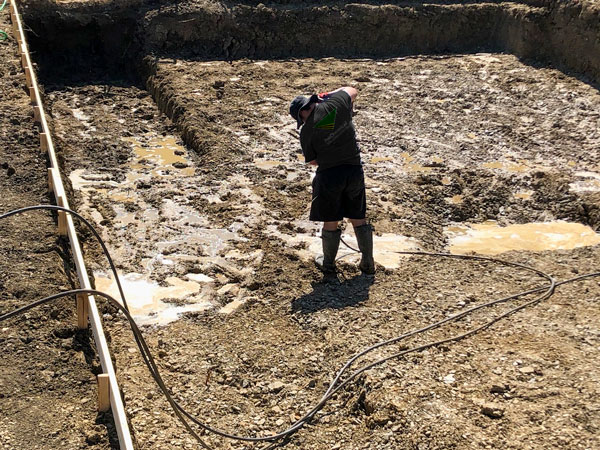Pools don’t crack because of bad concrete.
They crack because of bad soil.
And bad soil isn’t always visible.
Stabilizing Soil Beneath Pools: What Builders Need to Know
Cracks in swimming pools are more than cosmetic. In North Texas, they’re often the result of expansive clay soils swelling and shrinking beneath the structure. The soil moves. The pool shell doesn’t — and the result is stress, shifting, and structural damage.
At ProChemical, we work directly with geotechnical engineers and builders across DFW to stabilize these soils before they cause problems. A key factor in that process is determining how deep to inject. And that’s not guesswork — it’s a science guided by the geotech report.
How Injection Depth is Determined
Most of the time, geotechnical engineers dictate injection depth based on boring samples, soil profiles, and projected PVR (Potential Vertical Rise). Here’s how it typically breaks down:
-
Standard pool injection depth: ~7 feet
-
High-swell zones or heavy structures: up to 10 feet
-
Exceptional cases (e.g., Austin site): may require injection across the entire pool belly and 75% of the surrounding deck area
The deeper we inject, the more clay we can treat — which is especially important when underlying layers still pose a risk of swelling, even if the surface appears stable.
Hand Injection: Targeting the Pool Belly Precisely
When the pool shell is already in place or when access is limited, we use manual hand injection — a precise method ideal for pools, decks, and narrow areas.
Here’s how it works:
-
Spacing: 2-foot centers in a checkerboard pattern
-
Depth: 7–10 feet, depending on the site
-
Tool: A pressure-fed injection rod (similar to a car wash wand)
-
Flow: Water + ProChem stabilizing solution, injected in 1-foot lifts from bottom to top
This process ensures uniform coverage and helps eliminate voids, differential swelling, and future cracking beneath the pool structure.

Why Injection Beats Traditional Compaction or Fill
Traditional fill methods may not go deep enough — and many fail to alter the fundamental behavior of expansive clay. Injection works at the molecular level, modifying clay polarity so it no longer bonds with water.
Key benefits:
-
Reduces or eliminates swelling and shrinkage
-
Supports the entire pool shell, not just the edge beams
-
Works with existing structures (no need for excavation)
-
Compatible with engineer-specified foundation designs
What Builders & Homeowners Should Ask
Before starting any pool project — or fixing a cracked one — ask these three questions:
1. Has a geotechnical report been performed?
2. What is the projected PVR under the pool shell and decking?
3. Is soil injection included in the site prep plan?
If not, you’re building on hope instead of data.
Bottom Line: The Right Depth = Lasting Stability
Whether it’s 7 feet or 10, stabilizing the soil under your pool is non-negotiable in DFW’s clay-heavy regions. We work hand-in-hand with engineers and pool builders to inject confidence — literally — into the ground beneath your project.
ProChemical Soil Stabilization
Founded in 1992, ProChemical has pioneered ionic soil injection across Texas. Our field crews execute both manual and hydraulic injections to geotech specs, ensuring your pool rests on stable, low-PVR ground.
Serving Texas pool builders, developers, and discerning homeowners.
